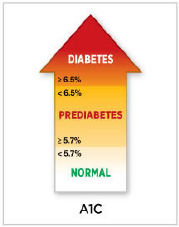By Autumn Bruce, BSN, RN and Operations Manager
As a key partner of the Year of Wellness (YOW), Tillamook County Community Health Centers (TCCHC) is supports this community-wide effort to reduce diabetes risk and improve disease management for individuals diagnosed with type 2 diabetes. With more than 11% of our county’s population already diagnosed with type 2 diabetes, it is imperative that we work together to prevent and manage disease risk for all residents.
There are many things people can do to reduce their risk. Having an A1C screening is the best, first step. Hemoglobin A1C (sometimes referred to as HbA1C) is a blood test that shows what a person’s average blood sugar level has been for the past 2-3 months. Doctors and nurses use this test for two reasons. 1) To see whether a person has diabetes, and 2) To monitor how well diabetes treatment is working.
While anyone could benefit from an A1C screening, people who are at a higher risk should be screened regularly. This includes individuals who are/have:
- Age 45 and older
- Overweight/obese, especially if excess weight is located around the mid-section
- Related to someone who has been diagnosed with diabetes
- Sedentary
- Part of a high-risk ethnic or racial group (e.g. African American, Hispanic, Native American, Asian American, and Pacific Islander)
- High blood pressure (greater than 140/90 mmHg)
- High triglyceride levels
- Polycystic ovary syndrome
- History of gestational diabetes
- History of vascular disease (heart disease and stroke)
- A1C greater than 5.7%, impaired glucose tolerance or impaired fasting glucose
When being screened for diabetes, a person’s A1C should be a score of 6 or less. If it is 6.5 or higher, it probably means the person has diabetes but they should be tested again, just to be sure. If A1C level is between 5.7 and 6.4, the individual is at risk for getting diabetes. In that case, it is recommended they begin doing things to prevent the condition from developing. Becoming more active, adopting a healthy eating pattern, quit use of tobacco products, and achieving moderate weight loss have all been shown to reduce diabetes risk. Often, a person will benefit from working with a mental or behavioral health professional to improve health habits to reduce risk. The goal is to return to normal blood sugar levels. It is important that lifestyle changes can and will be sustained for long-term success.
If someone has been diagnosed with diabetes, they will work with their primary care provider to identify the best course of treatment. This will include education and guidance to successfully adopt lifestyle changes. Additionally, A1C tests will show how well controlled their blood sugar is, with the goal of having a score of 7 or less. It is important to check with one’s doctor to know what your level should be. Not everyone with diabetes is the same. Some people need to aim for different A1C levels than others.
TCCHC, like other local providers, uses care managers who work with patients one-on-one to help them set SMART (Specific, Measurable, Achievable, Relevant and Time-bound) goals. They meet for 6-9 months for education and coaching to help the patient achieve their goals, and patients are seen by a behavioral health provider who helps them to manage their condition.
There are many great resources available to help, including the Living Well with Chronic Conditions program. Through group discussion, participants learn new ways to deal with issues caused by many chronic conditions. Over the six weeks, they cover such topics as handling stress, depression, talking to their provider, managing medications and fighting fatigue and frustration. There is no charge for this evidence-based class but registration is required by calling (503) 815-2270. Classes meet Tuesdays, February 21-March 28, 1:30-4:00 p.m. at NWSDS and September 5-October 10, 1:30-4:00 p.m. at the Herald Center.
Information Source: uptodate.com, an electronic clinical resource tool for physicians and patients.

